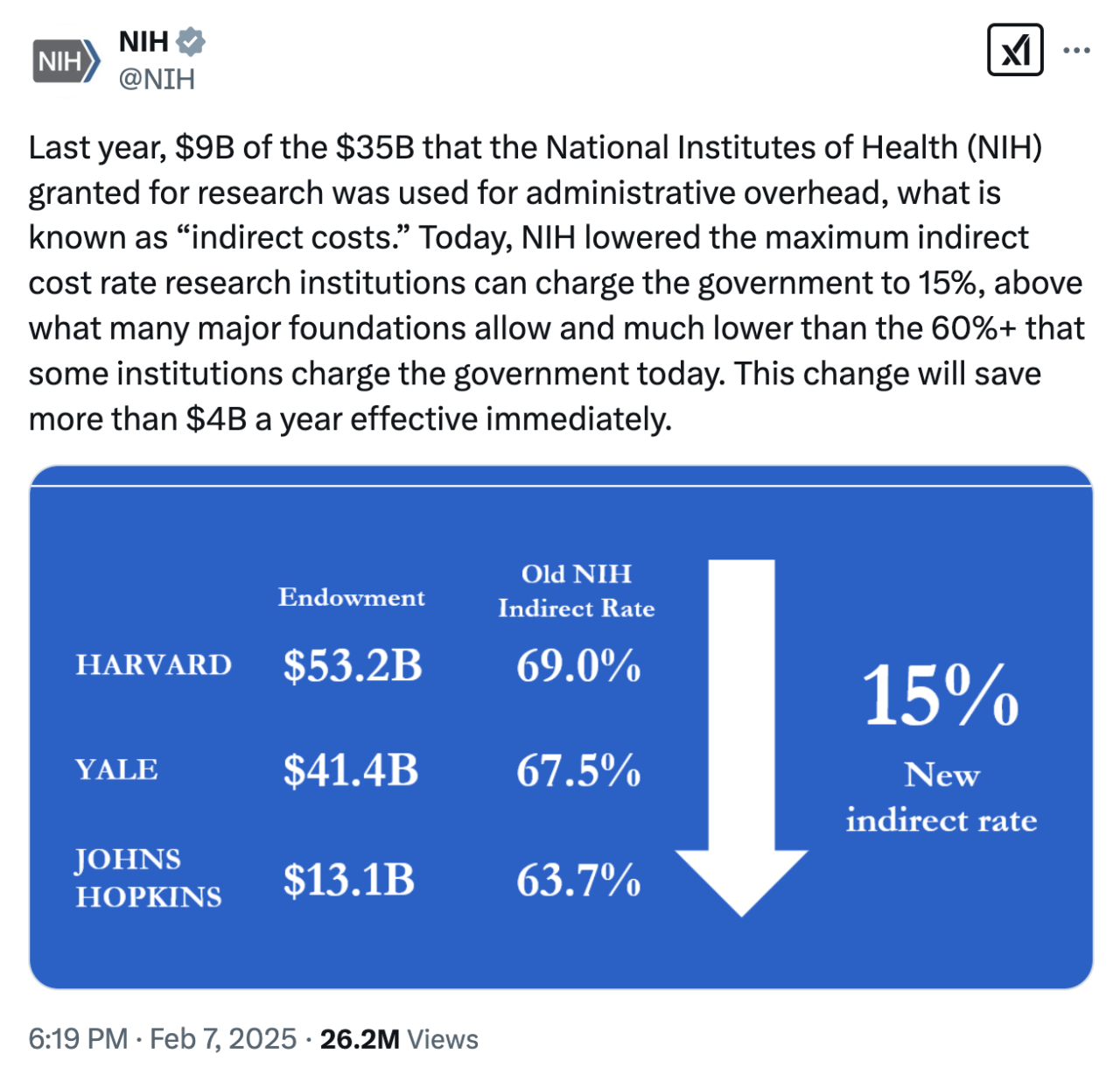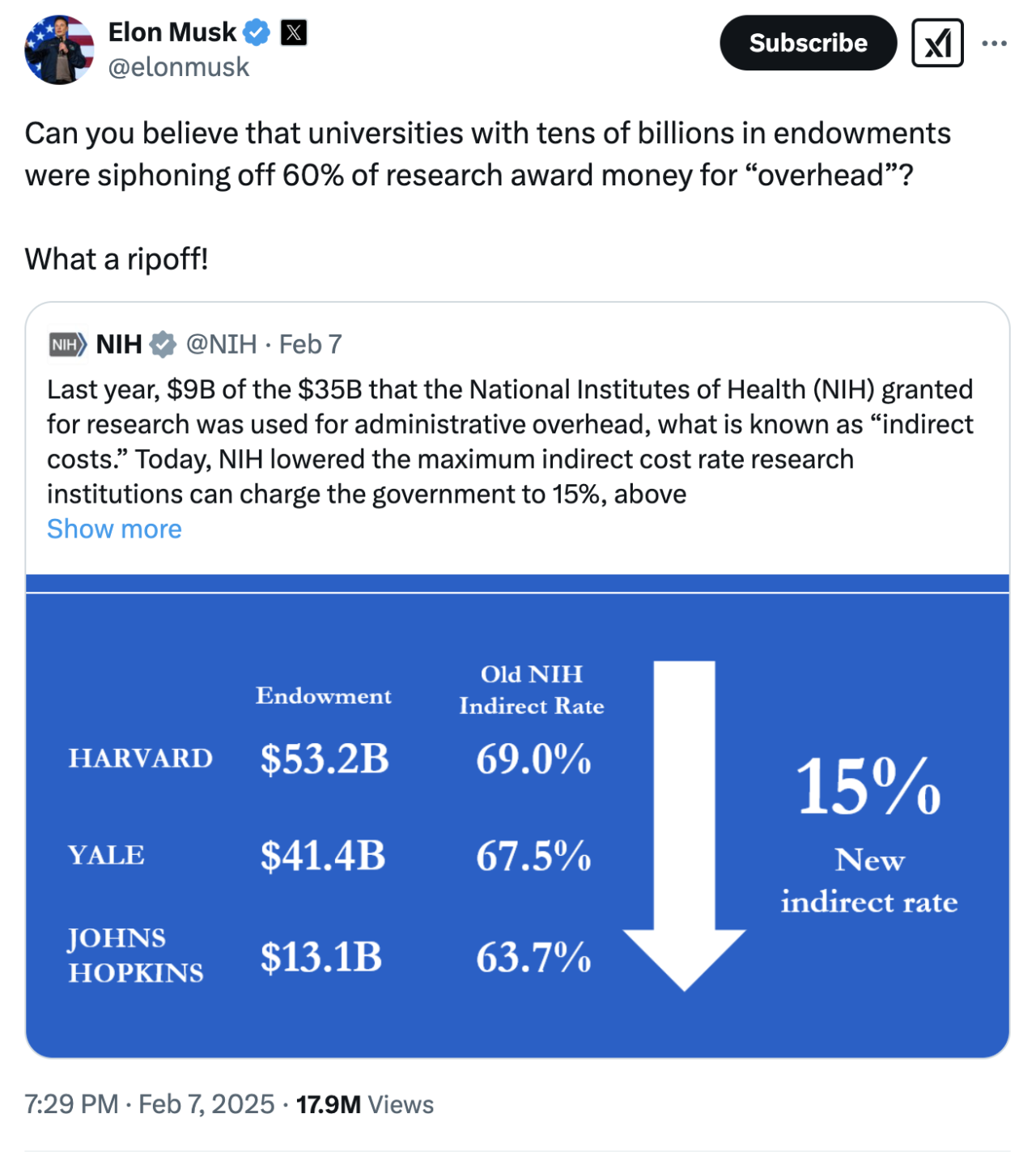Last week, in a classic Friday evening news dump, the Trump administration set off one of those frantic controversies that seem to be our fate for the next few years. A tweet from the official X account of the National Institutes of Health declared:

The tweet was backed up by a more formal memo justifying the new policy on the grounds that private foundations insist on much lower overhead rates in their grants to universities than the government does.
The response was predictably swift and intense. Scientists and advocates accused the administration of betraying patients and surrendering America’s leading position in biotechnology and medical research. Trump allies, from Elon Musk on down, answered them by calling elite universities spoiled, corrupt, and profligate:

Everyone involved knew their roles in this drama by heart, and fell right into them with gusto.
But the familiar partisan script obscures a deeper problem. Lost in the rush on all sides to play right into one another’s crudest clichés was an opportunity to actually govern a little better. On this front, as on many others, Donald Trump’s election has created real opportunities for advancing needed change. But the new administration seems intent on squandering those opportunities because it does not see itself as responsible for the federal government. Eager to demonstrate how corrupt our institutions have become rather than to facilitate their improvement, it is opting for lawless and performative iconoclasm over the more mundane but potentially transformative work of governance.
Indirect costs in NIH grants are a perfectly reasonable target for reform. But such reform could only succeed if it takes account of the law and if it gives Congress, the NIH itself, and the community of academic researchers some room to adjust to the administration’s new demands and priorities. That’s what effective executive leadership would look like.